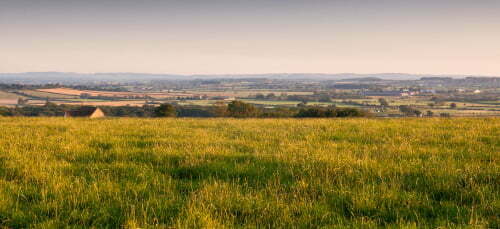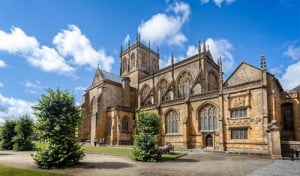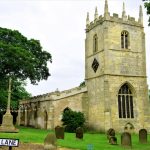
Stalbridge in Brief
Stalbridge is the smallest town and a civil parish in the north of Dorset, southwest England. It’s situated in the Blackmore Vale, near the border with Somerset, about a mile west of the River Stour. The town is located around 12 miles (19 km) east of Yeovil, and about 7 miles (11 km) west of Shaftsbury. The town is locally known for its agricultural heritage, as well as its well-preserved 15th-century market cross. The parish covers almost 6,000 acres (2,400 hectares) but has a relatively small population of around 3,000.
A Fleeting History
A Saxon Heritage
The first known settlement in the Stalbridge area was built in Roman times. However, Stalbridge was not established as a permanent settlement until Saxon times. By 1086, the town had become known as Staplebridge, as mentioned in the Domesday Book. In the later Medieval period, the town became known as Stalbriggh or Stapleford, meaning a bridge on posts.
In the late 13th century, King Edward I granted the town the right to hold a market. Around 1390, Stalbridge’s parish church of St Mary’s was founded. The church was improved and extended in both the 15th and 19th centuries. Sometime during the 15th century, Stalbridge’s Market Cross was erected to mark events held at its busy village square. During Tudor times it’s thought that the population of Stalbridge was around 500.
Stalbridge Park
In 1618, Mervyn Tucher (sometimes known as Mervin Touchet), the 2nd Earl of Castlehaven, inherited Stalbridge Park from his father. He build a large Jacobean mansion on the estate, which at the time, was the fifth-largest house in Dorset. In 1631, the earl’s eldest son James was instrumental in bringing a case of rape and sodomy against him. Tucher was subsequently found guilty and executed at Tower Hill in London on 14 May 1631.
James sold the house to Richard Boyle, the 1st Earl of Cork. In 1643, Boyle died, which saw the ownership of the house pass to his son, the famous scientist Robert Boyle. He took up residence as Lord of the Manor in 1644 on his return from continental Europe. He lived at the Stalbridge Park manor house for the next 6 years and conducted many of his most important experiments there. From the 17th century onwards, other grand houses began to spring up in and around Stalbridge.
The 18th Century
In 1725, famed artist Sir James Thornhill bought land and manor house just south of the town. He named the estate Thornhill Park. The famed painter was known for his work in the decoration of great houses and building interiors. He famously painted the dome of St Paul’s Cathedral. He was also well-known for being the father-in-law of another famous artist, i.e. William Hogarth. The 16th-century house is believed to have been originally owned by Sir Walter Raleigh. In 1727, Thornhill built a 30 ft (9.15 m) tall obelisk on his grounds to commemorate the accession of George II. Thornhill House, which was designed by Thornhill himself, was completed in 1730.
On 30 August 1766, co-founder of the Methodist movement John Wesley, recorded that he addressed ”a large and attentive congregation” on the roadside at Stalbridge. He had chosen to come to Stalbridge in aid of local Methodists, who up to that point had faced a campaign of persecution in the town.
The 19th Century
By 1822, the manor house at Stalbridge Park had fallen into a state of disrepair. The owner, the Marquess of Anglesey, had it demolished, seeing only the house’s gate posts retained. Within the next five years, the stone was all sold off. Much of it was used to construct houses elsewhere in the town. Almost inevitably, popular local myths and ghost stories soon grew around the demise of the house. Most involved the story of a great fire. Famed 19th-century Dorset-born author Thomas Hardy used Stalbridge Park as the inspiration for “Stapleford Park” that featured in his Wessex-based novels.
On 31 August 1863, Stalbridge railway station opened on the Somerset and Dorset Joint Railway (S&DJR). The single-track line stretched the 65 miles from Bath to Bournemouth. During Victorian times the population of Stalbridge grew to some 1700. In 1896, Stalbridge formed a parish council.
The Modern Era
Big events in Stalbridge’s recent history include the closing of the railway station on 7 March 1966. The last train passed through Stalbridge on the same day that the S&DJR line was officially closed. Another big occasion occurred in April 1992, when Stalbridge received official recognition as a town.
Today, the parish is locally renowned for its farming. However, the town also has two (small) industrial estates. Yet, many residents commute to the likes of nearby Yeovil, Wincanton, Gillingham, Shaftesbury, for work.
There are currently (2021) some 48 Listed Buildings in Stalbridge and a further 19 within the parish boundary. The town centre also has conservation area status.
Getting to Stalbridge
Stalbridge is situated on the A357 which runs northwards between Blandford Forum and Wincanton. However, most drivers will probably find it easiest to access the town, via the A30, which passes through Henstridge about a mile or so to the North.
The nearest train station to Stalbridge is at Templecombe, about 3.5 miles away. South West trains operate an hourly service from London Waterloo to Templecombe. The journey usually takes around 2 hours 15 mins.
The nearest airports to Stalbridge are Bournemouth (BOH) 38 miles away, and Bristol (BRS) 41 miles away.
Did you Know?
- On 20th March 1890, Stalbridge’s first fortnightly Thursday market was held. It replaced the town’s weekly Monday market.
- Famed author, screenwriter, satirist, and dramatist Douglas Adams, best known for his work ”The Hitchhiker’s Guide to the Galaxy”, lived in Stalbridge as a child.
Sport in Stalbridge
Stalbridge FC currently plays its football in the Dorset Premier League.
Stalbridge CC is a well-established cricket club, that plays in the Dorset Cricket League.
Things to see and do!
Learn to ride
Pevlings Farm Riding Stables is based at Templecombe, around 4 miles away from Stalbridge. Children can learn how to ride and look after horses and ponies. Adults under 12 st can also get in on the action. The school is open 7 days a week, 8 am to 6 pm.
Sherborne Museum
Sherborne Museum is located about 7 miles from Stalbridge. It houses a decent collection of local artefacts bringing to life the area’s history. Manned by volunteers, it’s open to the public on Saturdays from 10.30 am until 4.30 pm, from April to December.
Sherborne Abbey
Sherborne Abbey, also known as the Abbey Church of St. Mary the Virgin, was originally a Saxon cathedral. The ancient Abbey is steeped in history, as it was founded in AD 705 by the ‘King Ine’ of Wessex. Between 998 and 1539, it was a Benedictine abbey church, and since 1539, it’s been a Church of England parish church.

Sherborne Abbey. Image credit: Nigel Jarvis/shutterstock.com
Purse Caundle Manor
The 15th-century Purse Caundle Manor is a Grade II listed building located in the village of Purse Caundle, about 3 miles west of Stalbridge. The privately-owned country mansion retains much of its original character and fittings. It also displays a host of period artefacts. It’s open to the public but you will need to pre-book.
Hiking and Biking
The 17-mile (27 km) North Dorset Trailway is a walking and cycling path that runs along the former railway line between Stalbridge and Spetisbury. Much of the route is located close to the River Stour. It also passes through a number of small towns and villages, including Sturminster Newton, Stourpaine, and Blandford Forum.
Where to stay?
Stalbridge and the immediate surrounding area offer a decent range of accommodation choices, which should suit most budgets. There are luxury hotels, guesthouses, B & B’s, inns, self-catering cottages, farm stays, etc., all within a few miles of Stalbridge.
Moving to Stalbridge?
Properties in Stalbridge have sold for an average price of approximately £360,000 over the last year (Sep 2021). The best selling houses were detached properties, which sold for an average price of around £460,000. Flats sold for an average price of £98,000, terraced properties for £205,000, and semi-detached properties fetched £244,000. Overall, the average sold property price in Stalbridge over the last year was 1.6% down on the previous year.
Thinking of a Staycation?
Are you thinking of holidaying in the UK sometime soon? If so, why not check out some of our other travel guides for some staycation ideas. I think you’ll be surprised at the variety of great things to do in the UK’s fairly green and mostly pleasant land.
Header image credit: Joe Dunckley/Shutterstock.com

